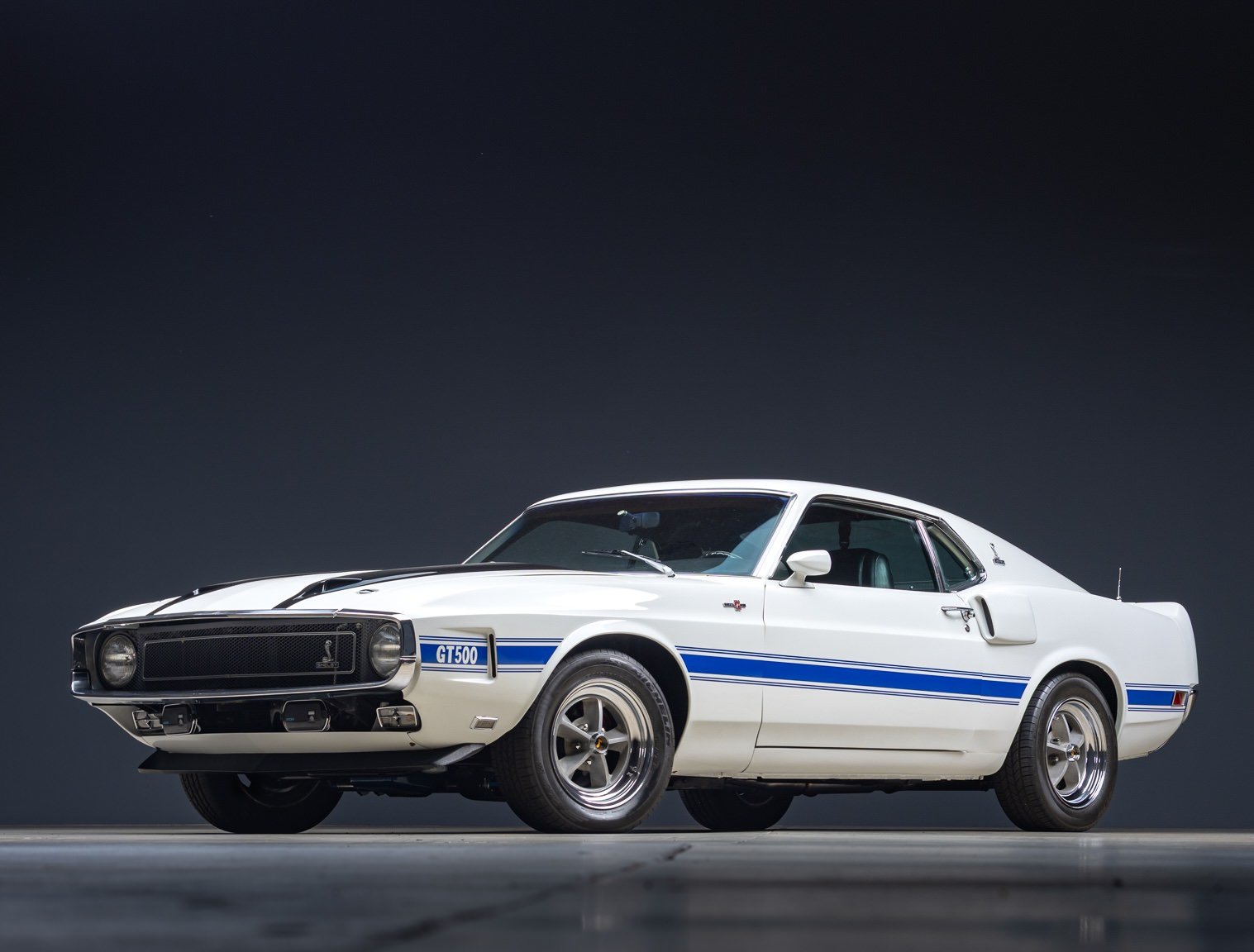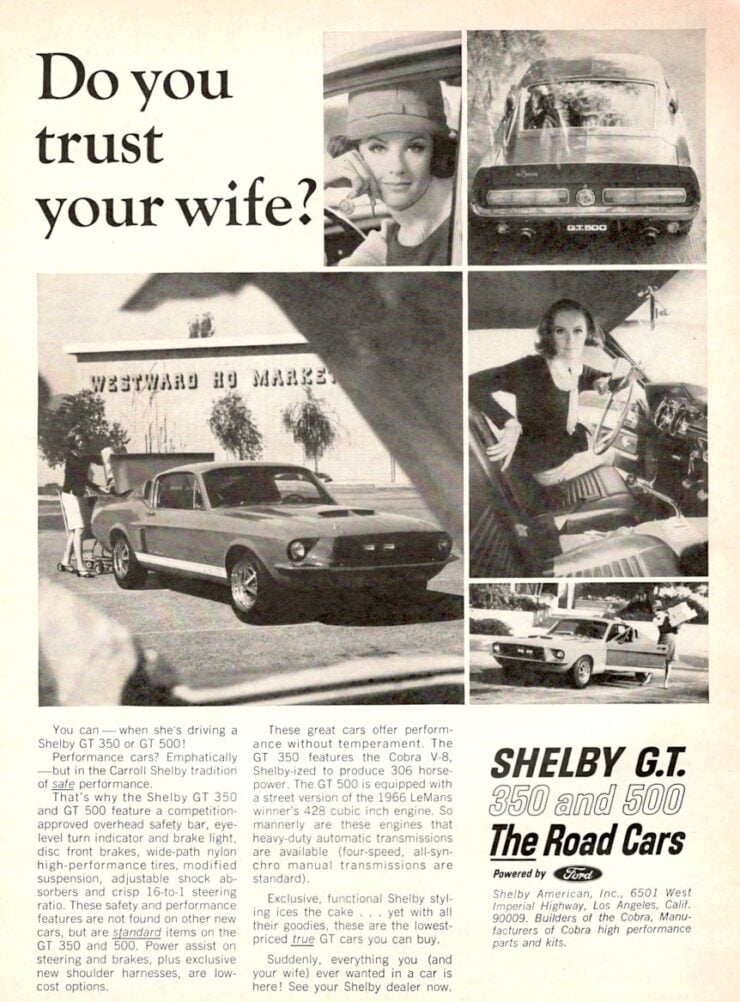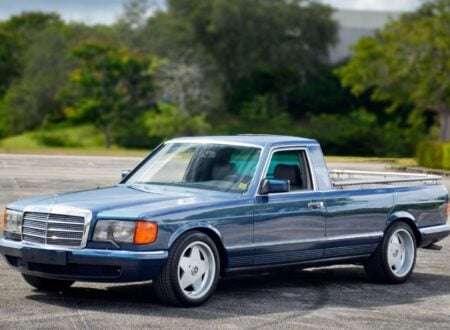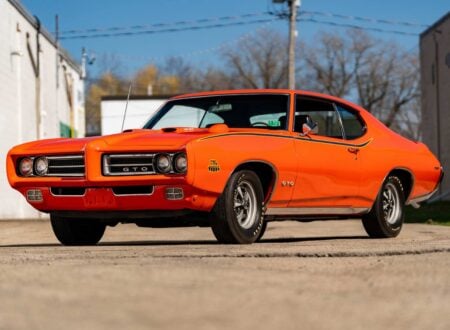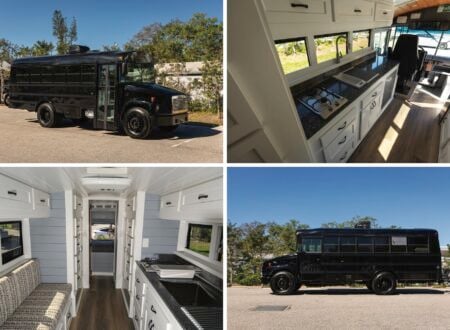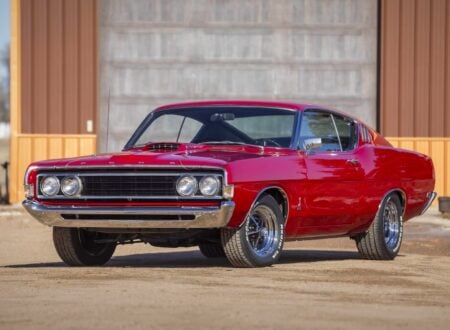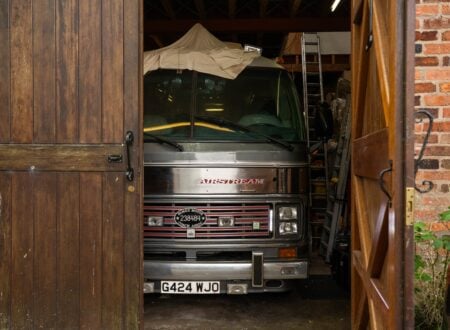This is an original 1970 Ford Shelby GT500, it’s one of just 380 that were made for the model year, and it would be the final year of Shelby GT500 production.
This car has had just three owners and a few years after it was bought by the current owner in 2005 it was sent off for a comprehensive restoration. It’s powered by a 428 Cobra Jet V8 topped with a four-barrel carburetor and a ram-air intake assembly which was factory rated at 335 bhp and 440 lb ft of torque.
Fast Facts: The Shelby GT500
- The 1970 Ford Shelby GT500 marked the final year of original GT500 production, with just 380 units sold. This particular example has had three owners from new, with the current owner acquiring it in 2005. Originally delivered in Oregon, it has since been restored to a factory-correct specification with some careful updates.
- Between 2016 and 2019, the car underwent a comprehensive restoration, including new panels, a full repaint in Wimbledon White with twin hood stripes, and thorough mechanical overhauls. The work also included a rebuild of the matching rear end and the C6 automatic transmission, while the dual center-exit exhaust system was replaced.
- Power comes from the 428 cubic inch Cobra Jet V8 topped with a four-barrel carburetor and ram-air intake. Rated at 335 bhp and 440 lb ft of torque when new, the engine was rebuilt during restoration and recently serviced with new ignition components, valve cover gaskets, and fresh fluids. Suspension and braking systems were also rebuilt to match.
- The interior retains period-correct black upholstery with woodgrain trim, red accents, and factory bucket seats alongside a Sport Deck rear seat. Subtle modern touches include air conditioning and a retro-style stereo. With 65,400 miles indicated, the car is offered for sale in Portland, Oregon, accompanied by records, a Deluxe Marti Report, and a clean title.
The Origins Of The Shelby Mustang
When the Mustang had first arrived, executives at Ford were acutely aware that it was a sporting car with no sports car pedigree, and plans were put into place to establish some bonafides as soon as possible.
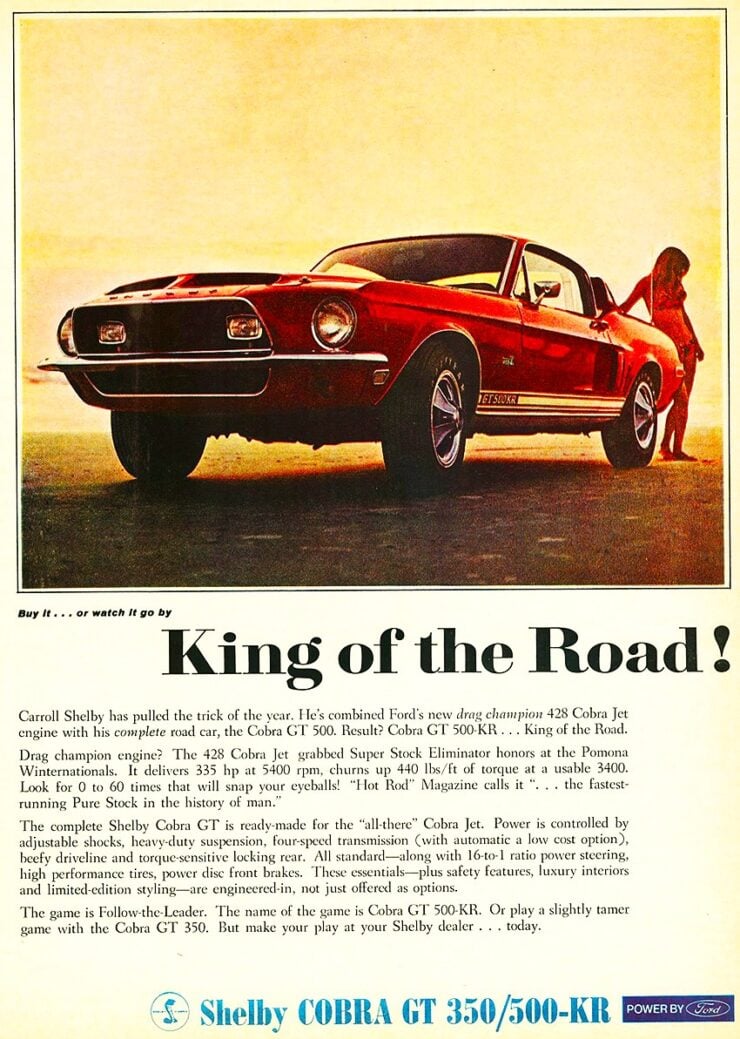

Carroll Shelby was consulted, and a deal was penned for him and his team to create a new version of the Mustang specifically targeted at SCCA B-Production class racing in the United States.
Shelby already had a good relationship with Ford at this time, as he was using Ford V8s (the same engine used in the Mustang) to power his Shelby Cobra sports car that had been regularly giving the Chevrolet Corvettes black-eyes since 1962.
The car that resulted from this project was the Shelby GT350. It was a completely stripped back Mustang with upgraded brakes, upgraded suspension, a significantly reworked engine, and it had been put on a weight loss regimen so strict that even the back seat had been thrown out.
The Shelby GT350 would prove to be a resounding success, it won the B-Production championship for three straight years and established the Mustang’s bonafides as a true race-winning performance car.
A newly redesigned Mustang would make its first appearance in 1967, and Ford sent it over to Shelby to see if he could give it the special treatment, this time with a big block V8.
The Arrival Of The Shelby GT500
When the 1967 Ford Mustang debuted it would be the largest redesign of the Mustang platform that had taken place since the model’s wildly successful debut back in 1964. The 1967 model was slightly larger, with updated styling, and perhaps most importantly, it now had an engine bay large enough to accommodate Ford’s big block V8.
Shelby would create two distinct lines of Shelby Mustangs from this point forward, the small block Shelby GT350, and the big block Shelby GT500.
The Shelby GT500 would receive the Ford Cobra FE Series 428 cubic inch (7.0 liter) Police Interceptor V8 with two 600 CFM Holley four-barrel carburetors on an aluminum intake manifold.
No one could have known it at the time, but this would be the car that would go on to inspire the creation of the car “Eleanor” from the 2000 film Gone in 60 Seconds.
This big block V8 was considerably more powerful than the K-Code 289 V8 fitted to the GT350, offering 355 bhp vs the 271 bhp of the smaller engine. Torque was much higher also, with the big block twisting out 420 lb ft vs the 329 lb ft of the 289.
This power was sent back through either a 4-speed manual or a 3-speed automatic transmission to the live axle rear end and inside the car a roll bar was fitted for safety – perhaps an indication that there was concern about putting this much power in the hands of untrained drivers.
A number of other changes were made to the vehicle to help improve performance and better cope with the heavier new engine. The front coil springs were uprated as was the anti-roll bar, front disc brakes came as standard along with Gabriel shock absorbers.
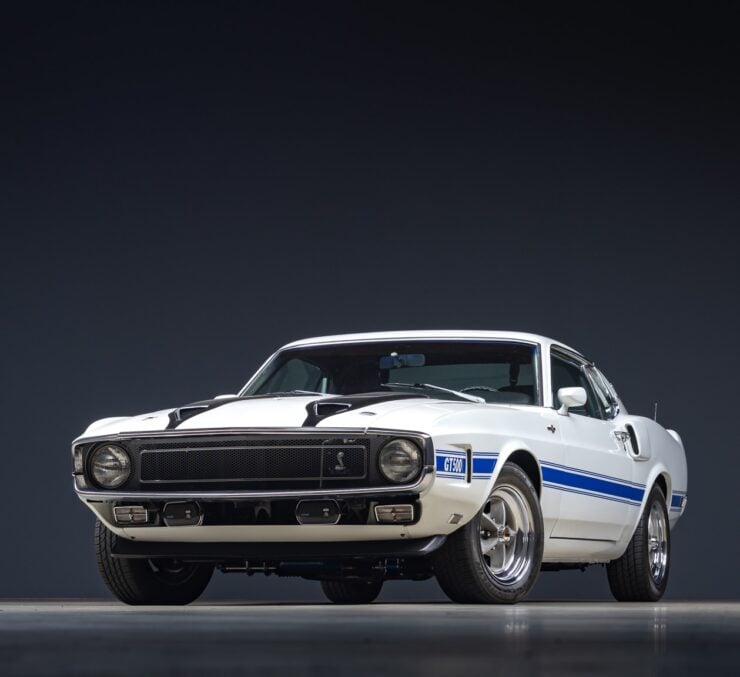

The Shelby GT500 series would remain on sale from 1967 until 1970 however this wasn’t the end for the badge – it would return due to popular demand in 2007 and remain in production over a number of sub-variants to the current day.
The 1970 Shelby GT500 Shown Here
This 1970 Shelby GT500 is one of 380 “carryover” cars originally built in 1969 but sold as 1970 models. First delivered in Oregon, it remained with just two owners before the current owner (and now seller) purchased it in 2005.
A full restoration was later commissioned between 2016 and 2019, during which time the car received new panels and a complete repaint in Wimbledon White with twin black hood stripes and side stripes. Today, it presents as a factory-spec Shelby with a handful of thoughtful updates.
Power is provided by a 428 cubic inch (7.0 liter) Cobra Jet V8 with a four-barrel carburetor, ram-air intake, and finned valve covers. Factory ratings put output at 335 bhp and 440 lb ft of torque, delivered through a rebuilt 3-speed C6 automatic and matching rebuilt rear end.
The engine itself was rebuilt during the restoration, with further servicing in preparation for the sale, including new ignition components, valve cover gaskets, and fresh oil. The dual square center-exit exhaust system was also renewed.
The body has Shelby’s trademark fiberglass nose, a vented hood, a chin spoiler, and a trunk lid spoiler, along with fog lights and Shelby badging. Suspension and braking systems, including the power-assisted front discs, were overhauled at the same time, ensuring safe, reliable braking ability – important when you consider what’s under the hood.
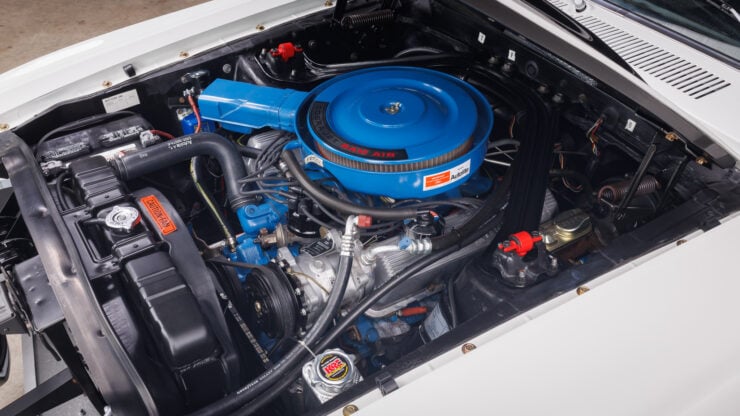

Inside, the cabin is trimmed in black with woodgrain accents and red striping, the factory bucket seats and Sport Deck fold-down rear seat remain in place, while modern amenities include Classic Auto Air climate control and a retro-style radio. Recent work in 2025 saw repairs to the horn, tachometer, and stereo, along with replacement window felts and mirror adjustment cables. The odometer now shows 65,400 miles.
The car is now being offered for sale out of Portland, Oregon with records, a Deluxe Marti Report, and a clean Oregon title. If you’d like to read more or visit the listing you’ll find it here on Bring a Trailer.
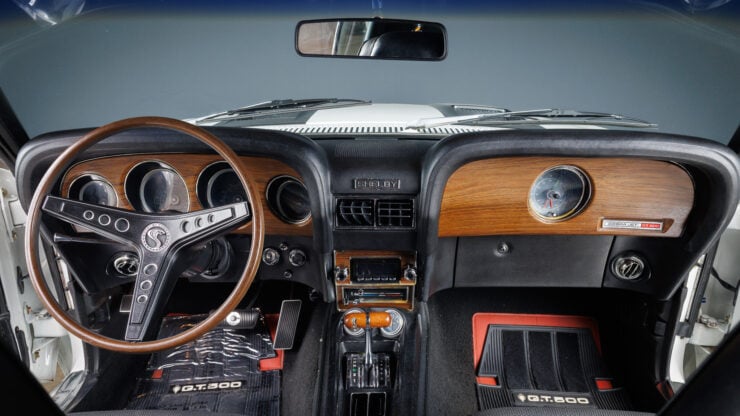
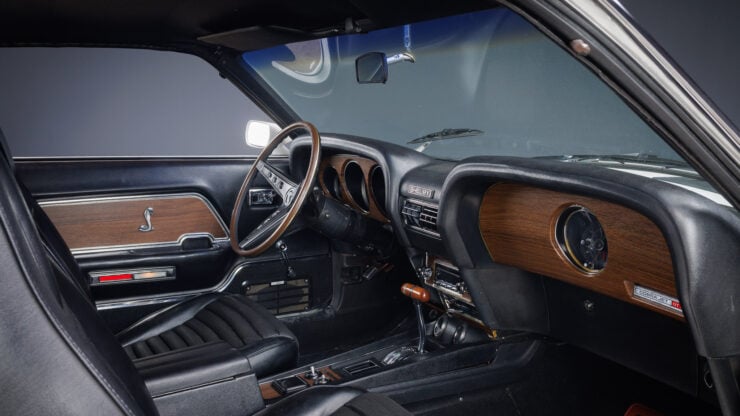
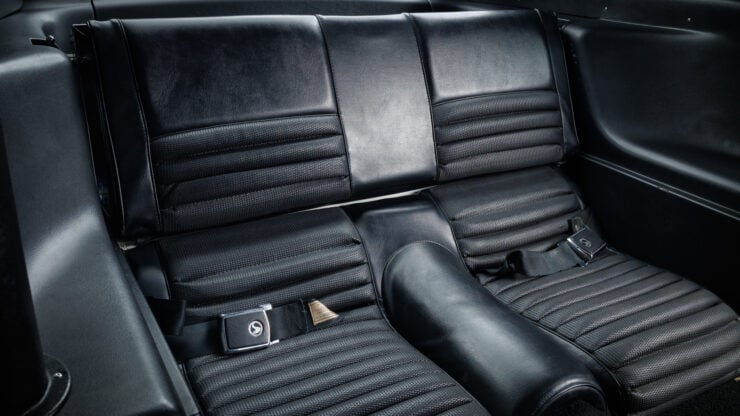
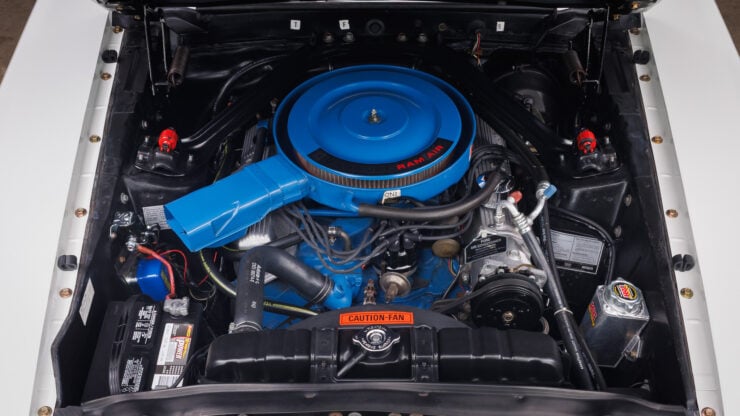
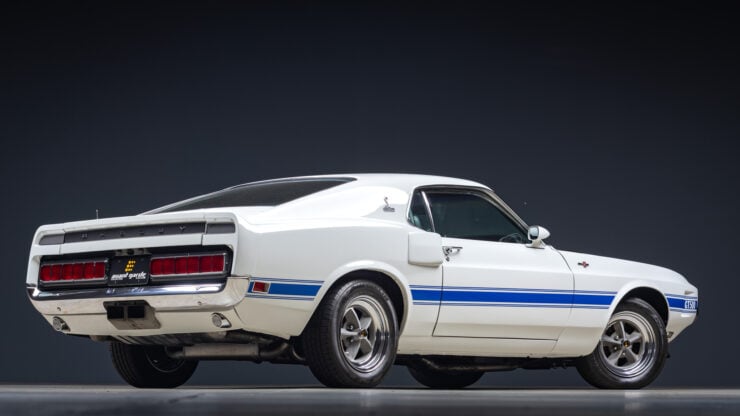
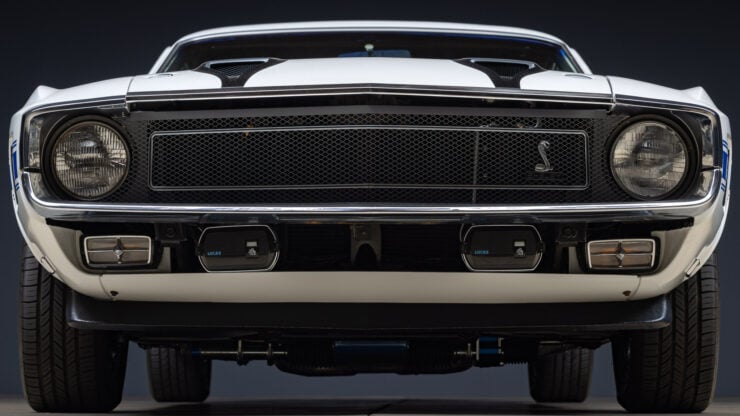
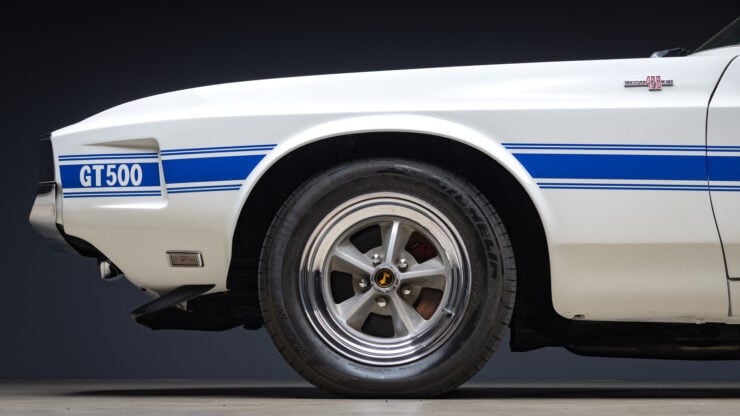
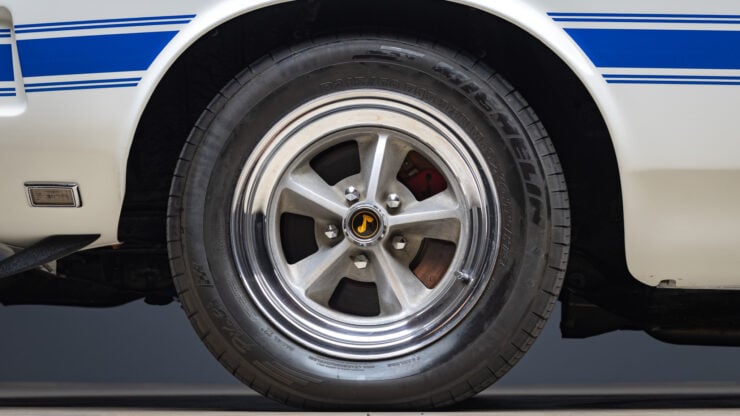
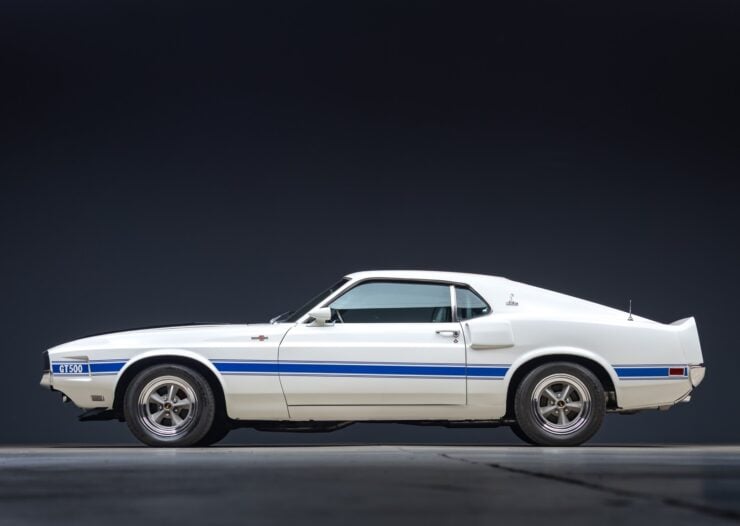
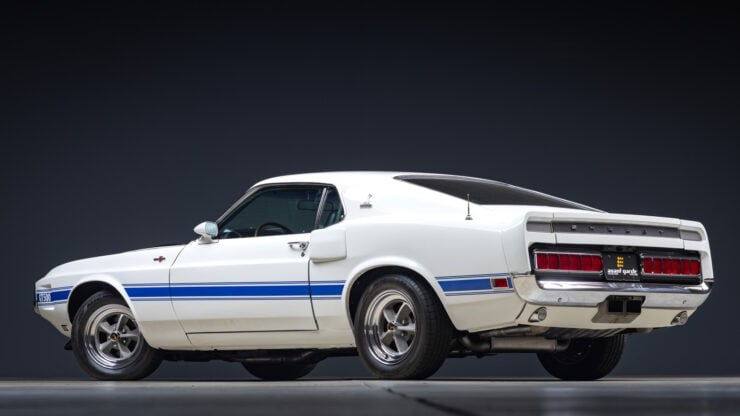
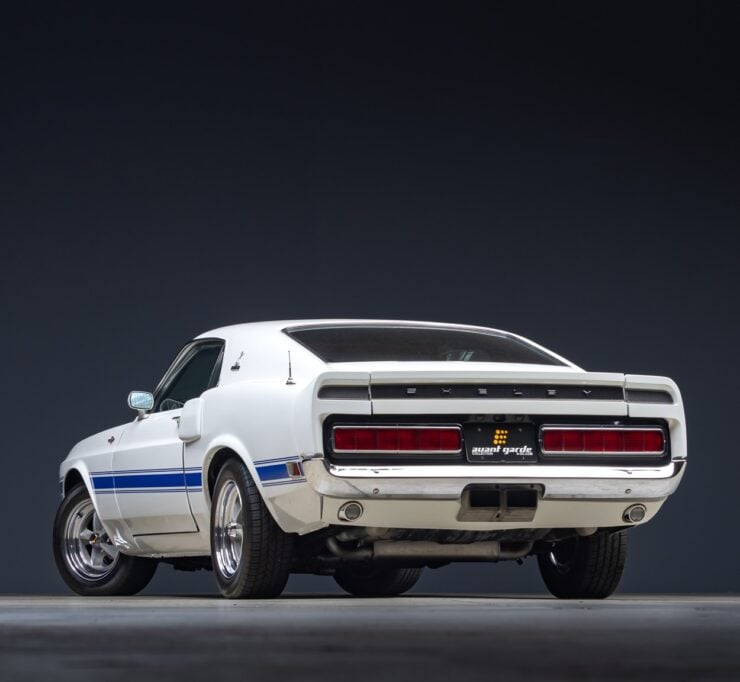
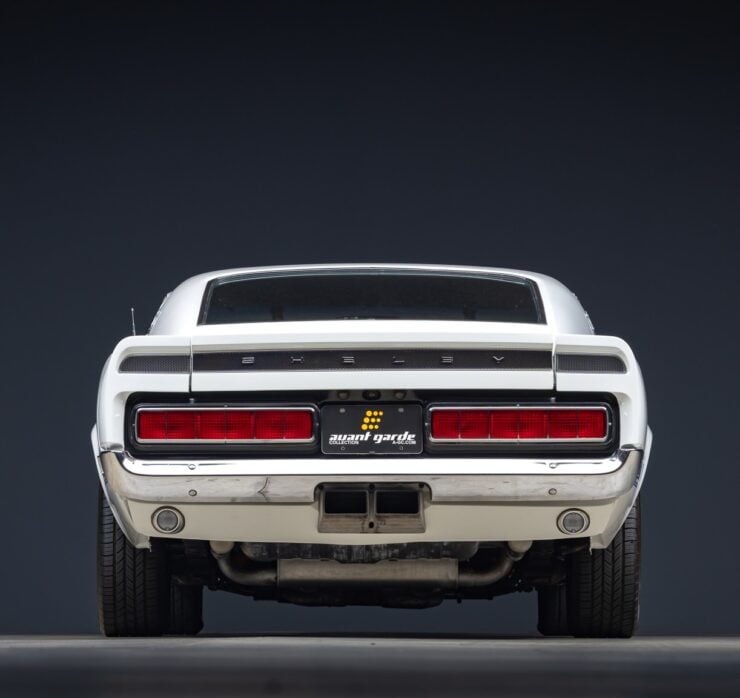
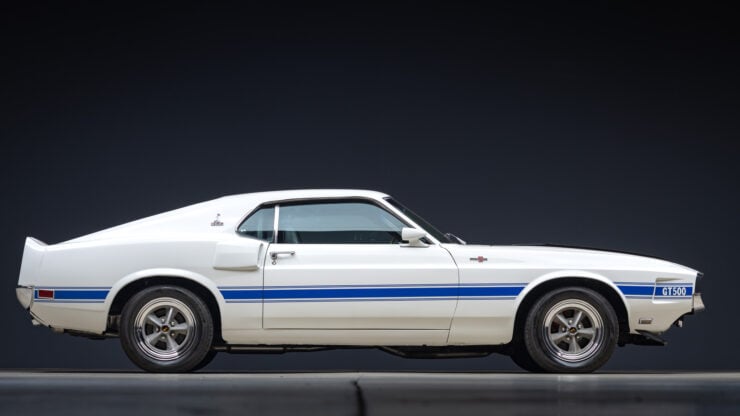
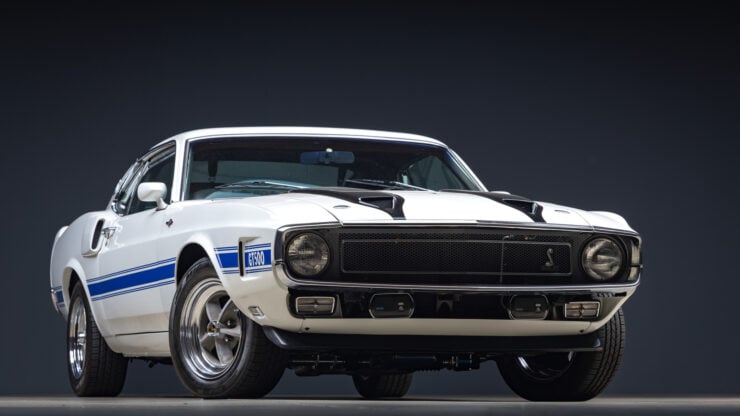
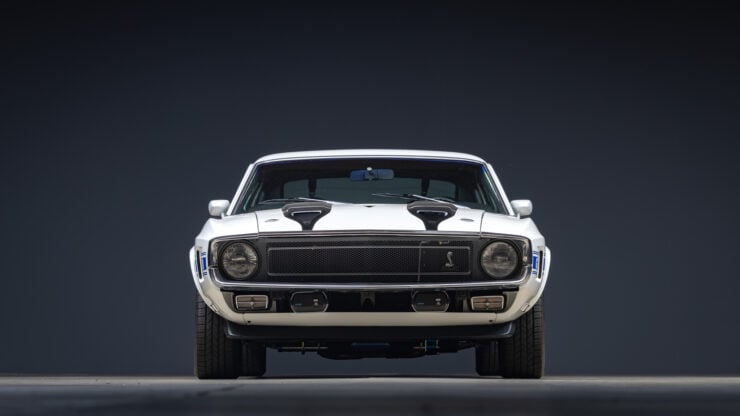
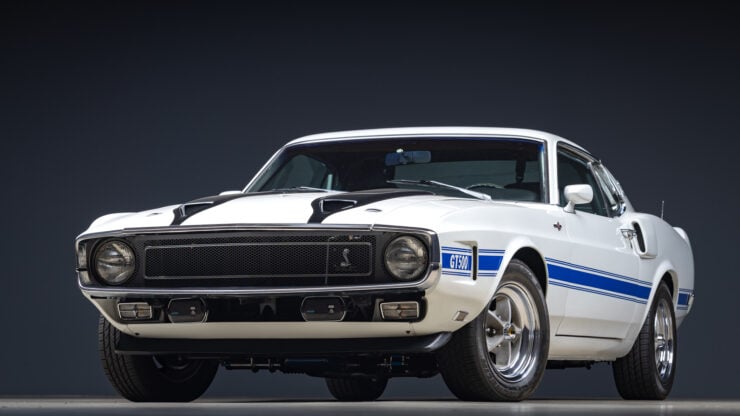
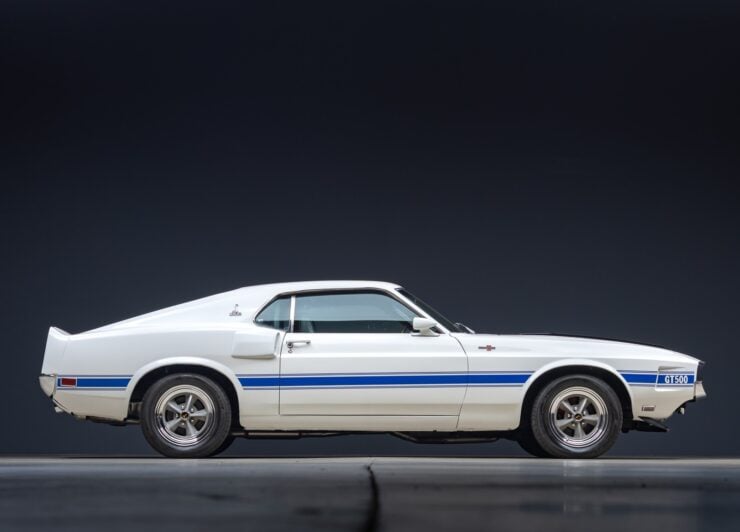
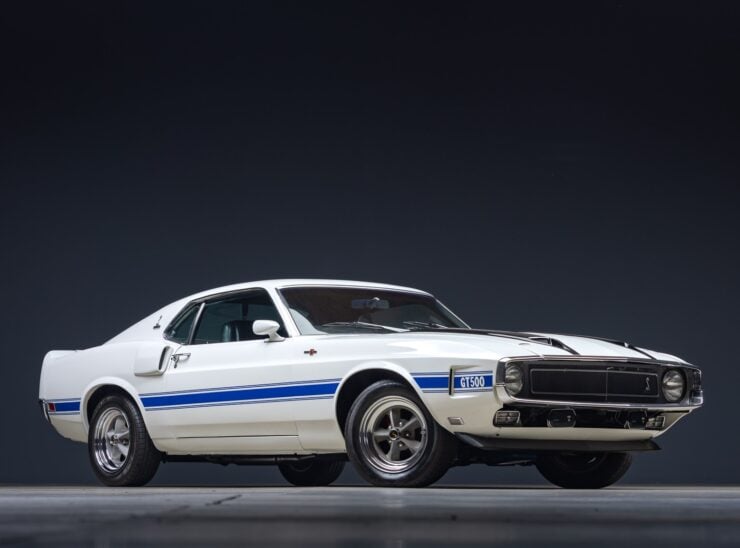
Images courtesy of Bring a Trailer

